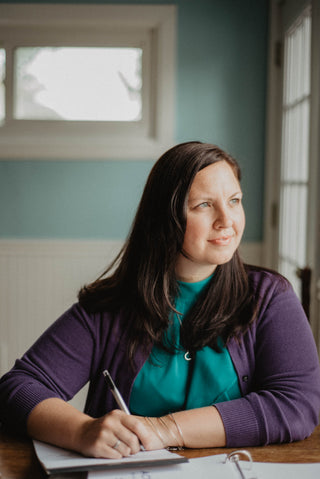Guest blog by Amanda Adas; Photos by Olivia Bauso
Living fearlessly. It’s in song lyrics and quotes of encouragement, but what does it really mean to live a fearless life, and more importantly— is living fearlessly really what we’re going for?

By definition, living fearlessly means to live with no fear. If we take that literally, we would probably walk into traffic without looking both ways or knowingly place our bare hands on hot stove tops. Personally, I do not want to live a life completely without fear, but I would love to know how to walk with and manage my fear; How to offer fear a seat at the table with an opportunity to contribute, but not have a say in the final decision.
Getting the opinion of your fear is healthy. Telling your fear, “Thanks, I’ve got this one” when you feel confident in a decision is very healthy. When fear reminds us the risk of taking a new job, getting into a new relationship, getting out of a bad relationship, moving to a new city, moving back in with your parents, getting married, having kids, adopting a pet… it’s all valid. Fear is absolutely welcome to remind us of the risks, and it’s up to us to consider the information, and remind ourselves what really is true for us.
In living fearlessly, when someone has convinced themselves to live or do something without fear, we have to ask: what fear is being avoided? Being bad at -- or even worse, being GOOD at -- a new job, growing pains of a new relationship, loneliness after getting out of a relationship, few friends in a new city… and so on. Many times, the fear being avoided shows up as the fear of failure.
Let’s consider this quote by Robert Schuller: “What would you attempt to do if you could not fail?” Now, let’s consider this quote from Elizabeth Gilbert: “What would you do even if you knew that you might very well fail?”
I don’t know about you, but the second one feels far more powerful and meaningful. What would you do even if you knew that you might very well fail anyway? Perhaps you’re asking more questions... What does it mean that I would fail? Fail completely? Run into an obstacle that I would have to overcome? What are the potential obstacles? What is the risk? Is it worth it?

By asking these questions, we perceive much more control over the outcome than attempting to do something under the assumption that failure is not a possibility. Not only is a lack of failure extremely boring (what would we learn!?), but it is nearly impossible to do something perfectly on the first try. In particular, something that is so meaningful we must put on our blinders to fear in order to even make an attempt toward it. The second quote allows us to address the fear and walk with it, rather than avoid or suppress that fear.
Have you ever noticed that the more you fear something, the more likely you are to experience it? This comes in many forms, but most often through irrational thoughts, unfounded fears and self-defeating behaviors. It can be difficult to recognize fear, especially a fear that has been so present in a person’s life and mind that it has had an effect on who that person is perceived to be. For example, the boss who is called a “control freak,” the friend who always values the needs of others before themselves, and the relative who is never wrong and will prove it with every statement. Each attribute is fear-driven and when we recognize this, we are able to take one step closer to better understanding ourselves and others.

For some, reflecting on these questions with a good journal and a cup of tea (or other hot beverage of choice) is enough to make a change. But for those who need more focused time for reflection, sitting down with a standardized assessment like The Actualized Leadership Profile (ALP) might be the way to go. This particular profile is based off Maslow’s Hierarchy of Needs; a little bit of behavior characteristics (like DISC), a little bit of emotional intelligence, and a-lotta bit of that brutally honest best friend who loves us so much that they can’t help but hold up a mirror.
The full version of the assessment provides a degree of our level of self-actualization, and shows how much of each profile shows up in the way we live (To test out an abbreviated version, there is a free assessment here!). The more self-actualized we are, the more resilient and less reactive we are. Increasing and enhancing our self-actualization allows us to better integrate— or to walk with— our shadow selves. How will you accomplish this?

There is a level of fear in gaining greater self-awareness. Self-awareness disturbs and disrupts, it does not comfort. Are you ready to push back against the “living fearlessly” revolution and not only face your fear but walk alongside it?
Amanda Adas is an Actualized Performance Cycle Certified Practitioner and the Navigator in Chief at Soul Compass. Discover your strengths, weaknesses and fears and how to channel them in Amanda's upcoming Are You Living in Your Own Shadow? class on August 2nd.
